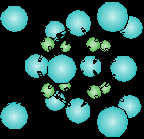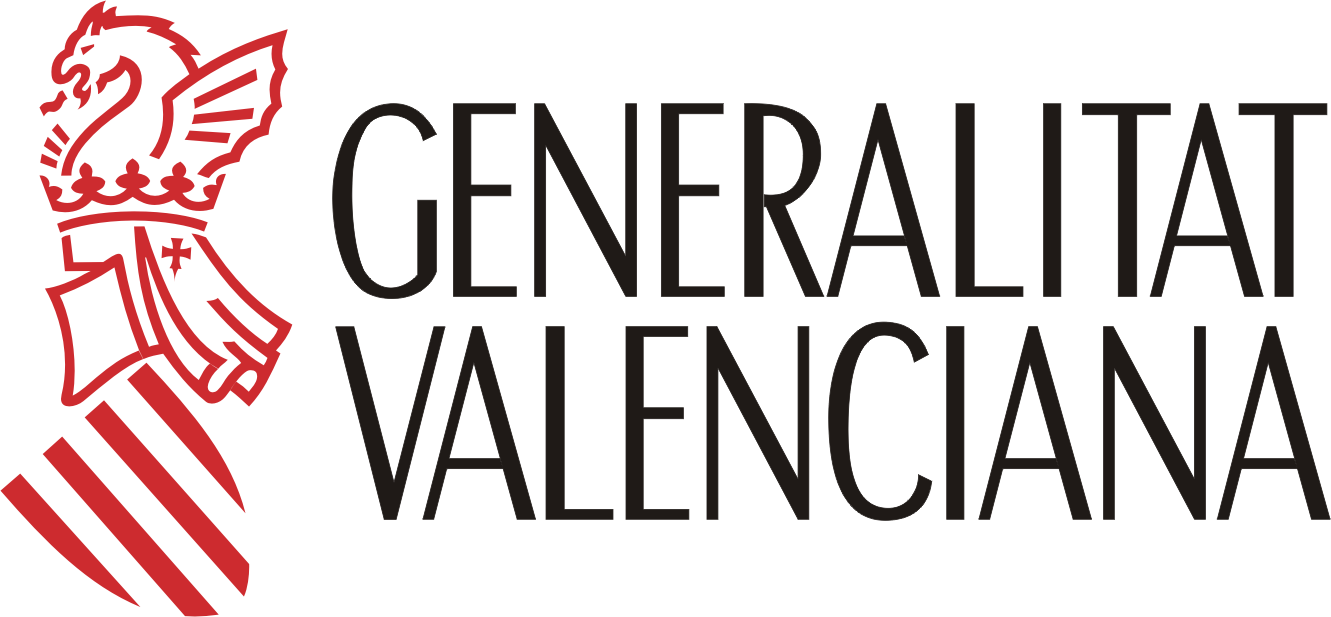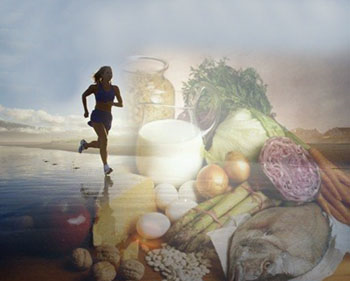NAME CLASS DATE ACTIVITY C21 HEAT
UNCLASSIFIED COPYNAME AND SURNAME CLASS KONKURS ENGLISH MASTER
A PARENT’S GUIDE TO A COMBINED GRADE CLASSROOM
CLASSROOM TESTED LESSON VIDEO DESCRIPTION “SECRETS OF THE
DIGITAL IMAGING FUNDAMENTALS CLASS NOTES CLASS
HAWKINS MASTERPIECES CLASSICS 102 CLASSICS 102 ROMAN LITERATURE
Experiment C2: Acid-Base Titration (pH Sensor)
Name _____________________ Class ______________ Date _________
Activity C21: Heat of Solution
(Temperature
Sensor)
|
Concept |
DataStudio |
ScienceWorkshop (Mac) |
ScienceWorkshop (Win) |
|
Reactions & energy |
C21 Heat of Solution.DS |
C21 Heat of Solution |
C21_HEAT.SWS |
Equipment Needed |
Qty |
Chemicals and Consumables |
Qty |
|
Temperature Sensor (CI-6505A) |
1 |
Ammonium chloride (NH4Cl), anhydrous |
1 g |
|
Balance (SE-8723) |
1 |
Sodium carbonate (Na2CO3), anhydrous |
1 g |
|
Calorimeter*, 25 mL |
1 |
Water, distilled |
40 mL |
|
Graduated cylinder, 100 mL |
1 |
Weighing paper |
2 |
|
Rubber band |
1 |
Cup, plastic (condiment) |
2 |
|
Protective gear |
PS |
Lid, plastic (to fit plastic cup) |
1 |
(*The calorimeter is made from two small plastic cups nested one inside the other. Please see the diagram.)
What Do You Think?
I![]() n
this activity, you will dissolve two solids, ammonium chloride and
sodium carbonate, to determine if the solution process for each is
exothermic, ∆H = (-), or endothermic, ∆H = (+). What do
you predict?
n
this activity, you will dissolve two solids, ammonium chloride and
sodium carbonate, to determine if the solution process for each is
exothermic, ∆H = (-), or endothermic, ∆H = (+). What do
you predict?
Take time to answer the ‘What Do You Think?’ question(s) in the Lab Report section.
Background
W
hen
an ionic compound dissolves in water, the ions that make up the
crystalline structure break into individual charged particles. Water
molecules then surround these charged particles. In fact, the polar
covalent water molecules are responsible for the crystal's breakdown.
Dissolution requires an increase in entropy. Entropy, S, a measure of
disorder, is positive. Crystals, which are orderly arrangement of
molecules, break down to individual ions. The ions become scattered
throughout the solution. The change in entropy (∆S) is
positive.
Beside the increase in disorder, the process of dissolving a solid may give off or require heat. If the solution of the solid crystal gets warm, the reaction is exothermic and the Heat of Solution (∆H) is negative. If the solution of the solid crystal gets cool, the reaction is endothermic and the Heat of Solution (∆H) is positive.
The combination of attaining maximum disorder and lowest energy can be reconciled by the Gibb's Free Energy equation, which says:
∆G = ∆H - T∆S
If the substance dissolves, the reaction is spontaneous and ∆G is negative (-).
Since a solution is always more disordered than the two components separately, ∆S is always positive (+). The value of (-T∆S) is always negative. If the solution gets cold, the value of ∆H is positive but the tendency of the reaction to maximum disorder over rides the ∆H value and the solid dissolves.
If the solution gets warm, the values of ∆H and ∆S are additive and the solid still dissolves. Once the solid is dissolved, the system reaches equilibrium and no further energy is lost or gained.
SAFETY REMINDERSWear protective gear while handling chemicals. Follow directions for using the equipment. Dispose of all chemicals and solutions properly. |
|
|
|
For You To Do
Use the Temperature Sensor to measure the change in temperature as two different solids dissolve in distilled water. Use DataStudio or ScienceWorkshop to record, display, and analyze the data.
P ART
I: Computer Setup
ART
I: Computer Setup
Connect the ScienceWorkshop interface to the computer, turn on the interface, and turn on the computer.
2. Connect the DIN plug of the Temperature Sensor to Analog Channel A on the interface.
3. Open the file titled as shown;
-
DataStudio
ScienceWorkshop (Mac)
ScienceWorkshop (Win)
C21 Heat of Solution.DS
C21 Heat of Solution
C21_HEAT.SWS
The DataStudio file has a Workbook display. Read the instructions in the Workbook.
The ScienceWorkshop document has a Graph display with a plot of the Temperature versus Time and a Table display of Temperature.
PART II: Sensor Calibration and Equipment Setup
 You
do not need to calibrate the sensor.
You
do not need to calibrate the sensor.
1. Make a calorimeter by placing a rubber band about the middle of a plastic condiment cup. Nest this cup inside another cup of the same dimension.
2. Use a 1/4” paper punch to make a hole in the lid of the inside cup.
3. Put 20 mL of distilled water in the inside cup.
4. Measure 1.0 g of ammonium chloride on a piece of weighing paper. DON’T add the solid to the liquid yet.
5. Put the lid on the cup. Place the Temperature Sensor in the hole in the lid.
PART IIIA: Data Recording – Ammonium Chloride
When everything is ready, start recording data.
After about five seconds, remove the Temperature Sensor and add the ammonium chloride solid through the hole. QUICKLY put the sensor back into the cup.
Swirl the cup as you allow the reaction to continue until it is complete.
Continue until the temperature does not change any further, and then stop recording data.
Remove the Temperature Sensor from the cup and rinse the end of the sensor.
Discard the solution and rinse the cup.
PART IIIB: Data Recording – Sodium Carbonate
Repeat the procedure with 1.0 g of sodium carbonate solid in place of the ammonium chloride.
Put 20 mL of distilled water in the inside cup.
Measure 1.0 g of sodium carbonate on a piece of weighing paper. DON’T add the solid to the liquid yet.
Put the lid on the cup. Place the Temperature Sensor in the hole in the lid.
When everything is ready, start recording data.
After about five seconds, remove the Temperature Sensor and add the sodium carbonate solid through the hole. QUICKLY put the sensor back into the cup.
Swirl the cup as you allow the reaction to continue until it is complete.
Continue until the temperature does not change any further, and then stop recording data.
Remove the Temperature Sensor from the cup and rinse the end of the sensor.
Discard the solution and rinse the cup.
• You will have two runs of data at the end of the data recording.
Analyzing the Data
1. Set up the Table so it has two columns: one for the first data run (ammonium chloride - Run #1) and one for the second data run (sodium carbonate - Run #2).
2. Use the Table or Graph display to find the starting and ending values for temperature for the solution of ammonium chloride (Run #1). Record these values.
3. Find the starting and ending values for temperature for the solution of sodium carbonate (Run #2). Record these values.
Record your results in the Lab Report section.
Lab Report - Activity C21: Heat of Solution
What Do You Think?
In this activity, you will dissolve two solids, ammonium chloride and sodium carbonate, to determine if the solution process for each is exothermic, ∆H = (-), or endothermic, ∆H = (+). What do you predict?
Data Table: Ammonium Chloride
|
Data |
Item |
Value |
|
1 |
Mass of ammonium chloride used |
g |
|
2 |
Moles
of ammonium chloride used ( |
moles |
|
3 |
Starting temperature of water |
˚C |
|
4 |
Ending temperature of water |
˚C |
|
5 |
Change in temperature (Data 3 - Data 4) |
˚C |
|
6 |
Heat generated or gained (mass of liquid x Data 5 x 4.18) |
J |
|
7 |
Molar Heat of Solution (Data 6÷ Data 2) |
J/mole |
Data Table: Sodium Carbonate
|
Data |
Item |
Value |
|
1 |
Mass of sodium carbonate used |
g |
|
2 |
Moles
of sodium carbonate used ( |
moles |
|
3 |
Starting temperature of water |
˚C |
|
4 |
Ending temperature of water |
˚C |
|
5 |
Change in temperature (Data 3 - Data 4) |
˚C |
|
6 |
Heat generated or gained (mass of liquid x Data 5 x 4.18) |
J |
|
7 |
Molar Heat of Solution (Data 6÷ Data 2) |
J/mole |
Questions
1. Which substance undergoes an exothermic reaction (∆H = (-) negative)?
2. Which substance undergoes an endothermic reaction (∆H = (+) positive)?
3. Complete the summary table below by marking “-” or “+” for each substance:
-
Summary
Ammonium chloride
Sodium carbonate
∆G
∆H
∆S
C21 ©
1999 PASCO scientific p.
HHHF CLASS PREPARATION CHECKLIST LOGISTICS DETERMINE
KNOW THE CLASSIFICATION SCHEME FOR MATTER RECALL FROM
LICEO SCIENTIFICO LEONARDO DA VINCI LICEO CLASSICO
Tags: activity c21:, - activity, class, activity
- VARIETY OF METHODS TO EXPLORE PSYCHOLOGICAL OR SOMATIC SYMPTOMS
- REF BAR001 BAR SUBMISSION PART ONE A1 PRACTICE AREA
- OBRAZEC 1 (PROŠNJA ZA POTRDITEV IZBRANEGA PROGRAMA MENTORIRANJA INALI
- FORELESNING 7 BAGGE TYSK HISTORIOGRAFI BAGGE DEN
- LA PIGNATTA N° 58 LA “CAMERA DI CONCILIAZIONE ED
- 2 Drawing Conclusions an Imagological Survey of Britain and
- CENTRO SCT AGUASCALIENTES AV JULIO DIAZ TORRE 110 CIUDAD
- GUIDE TO CHANGING IMPROPER FRACTIONS AND MIXED NUMBERS
- REQUESTING ACCESS TO GOVERNMENT RECORDS UNDER THE NEW JERSEY
- INSS651 CH 12 DISTRIBUTED DATABASES DDB A DB PHYSICALLY
- 1HÉT (A VALÓSZÍNŰSÉGSZÁMÍTÁS TÁRGYA ALAPFOGALMAI ESEMÉNYALGEBRA MŰVELETEK AZ ESEMÉNYEK
- ALLEGATO 15 MIRKO VA AL LAVORO… MIRKO HA 17
- FACTSHEET TWENTY YEARS AFTER THE DISABILITY DISCRIMINATION ACT WHAT
- Universidad Autónoma DE SAN Luis Potosí Facultad DE Derecho
- CHUYỆN HÔN NHÂN NỮ HOÀNG ELIZABETH II VÀ HOÀNG
- 7 GRACE MERCY AND PEACE BE UNTO YOU FROM
- ACTA DERA SESSION EXTRAORDINÀRIA DETH PLEN DER AJUNTAMENT DETH
- S WALLOW DELL PRIMARY & NURSERY SCHOOL TITLE OF
- 9 DEMOCRACY EQUALITY AND INVESTMENT PROTECTION IN EUROPEAN TRADE
- GOVERNMENT SECRECY AND TRANSPARENCY FALL 2018 W 1303301 ROOM
- 0 SPATIAL PLANNING TEAM SOUTH GLOUCESTERSHIRE COUNCIL
- Recent%20Judgments%20Bulletin%2024%202017
- DOCUMENTE JUSTIFICATIVE NECESARE DECONTĂRII INDEMNIZAȚIEI PENTRU INCAPACITATE TEMPORARĂ DE
- SERVICE OF PROCESS BY PUBLICATION OF SUMMONS JURISDICTION –
- INTERNATIONAL CONFERENCE IN STOCKHOLM 811 NOVEMBER A MEETING BETWEEN
- I ¿ERES ADICT AL TELÉFONO MÓVIL? 1 ¿QUÉ TIPO
- OBČINA ŠOŠTANJ ŽUPAN TRG SVOBODE 12 ŠOŠTANJ TELEFON
- MARSLAND PRESS WORLD RURAL OBSERVATIONS 2010 2(1) 7579 FISH
- SUB ACUTE FACILITIES 2006 NATIONAL REFERENCE PRICE LIST IN
- T ROY HIGH SCHOOL AVID VIDEO & PICTURE RELEASE
 PREMIOS “SOLIDARIDAD EN EL AULA” 20092010 BLASCO PREMIA A
PREMIOS “SOLIDARIDAD EN EL AULA” 20092010 BLASCO PREMIA A 16 CON FECHA 4 DE OCTUBRE DEL PRESENTE AÑO
16 CON FECHA 4 DE OCTUBRE DEL PRESENTE AÑO © STATE OF QUEENSLAND (DEPARTMENT OF HOUSING AND PUBLIC
© STATE OF QUEENSLAND (DEPARTMENT OF HOUSING AND PUBLIC EDOTTO REGIONE PUGLIA BACHECA ESPLORA
EDOTTO REGIONE PUGLIA BACHECA ESPLORA 7 US DEPARTMENT OF HOUSING AND URBAN DEVELOPMENT PUBLIC
7 US DEPARTMENT OF HOUSING AND URBAN DEVELOPMENT PUBLIC CONSORCI DE MUSEUS EL PROGRAMA ‘CULTURA EN PIE DE
CONSORCI DE MUSEUS EL PROGRAMA ‘CULTURA EN PIE DE “ LA NUTRICIÓN Y LA ACTIVIDAD FÍSICA” NIVEL 3R
“ LA NUTRICIÓN Y LA ACTIVIDAD FÍSICA” NIVEL 3R CT.%20DTA%20%20168-08%20%20EVALUACI%C3%93N-FABIOLA%20GARCIA%20HERREROS
CT.%20DTA%20%20168-08%20%20EVALUACI%C3%93N-FABIOLA%20GARCIA%20HERREROS SERVIZO DE RELACIÓNS EXTERIORES EDIFICIO INTERCENTROS AVDA BERNARDINO PARDO
SERVIZO DE RELACIÓNS EXTERIORES EDIFICIO INTERCENTROS AVDA BERNARDINO PARDO PROJECTE DORDRE DE XX DE XX DE LA
PROJECTE DORDRE DE XX DE XX DE LA0 CI132DR STANDING COMMITTEE ON CI132DR PEACE
MÚSICA ACTUAL ESPAÑA MOVING HTTPWWWYOUTUBECOMWATCH?VW466XYUL5RI OBRINT PAS EL CANT
 MRP SUPPORT DOCUMENT FOR THE URBAN NAMA DESIGNING SUSTAINABLE
MRP SUPPORT DOCUMENT FOR THE URBAN NAMA DESIGNING SUSTAINABLE BIRTHS DEATHS AND MARRIAGES APPLICATION TO REGISTER A
BIRTHS DEATHS AND MARRIAGES APPLICATION TO REGISTER A IDENTIFICATION DES MATIERES PLASTIQUES MATÉRIEL 4 ÉCHANTILLONS
IDENTIFICATION DES MATIERES PLASTIQUES MATÉRIEL 4 ÉCHANTILLONS DEAR PARENTS OAK POINT ELEMENTARY WILL HOST A SCHOOLWIDE
DEAR PARENTS OAK POINT ELEMENTARY WILL HOST A SCHOOLWIDE LIQUIDACIÓN DE DIETAS Y GASTOS NOMBRE PROYECTO LUGAR Y
LIQUIDACIÓN DE DIETAS Y GASTOS NOMBRE PROYECTO LUGAR YA MÁSODIK TEREMTÉSTÖRTÉNET A PARADICSOM 24424 (24A P)
FORMULARZ OFERTOWY WYKONAWCY DANE DOTYCZĄCE WYKONAWCY NAZWA SIEDZIBA
06096 DEPARTMENT OF ENVIRONMENTAL PROTECTION CHAPTER 145 NOX CONTROL



 )
) )
)